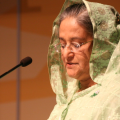UNESCO Adds Three Arab Sites to World Heritage List

During its 46th session in New Delhi, India, the UNESCO World Heritage Committee—in a historic action—has added three outstanding Arab sites to the World Heritage List. Emphasizing the rich cultural tapestry and historical relevance of these sites, this awareness draws attention worldwide to the Monastery of Saint Hilarion/Tell Umm Amer in Palestine, Umm el Jimal City in Jordan, and the Cultural Landscape of Al Faw Archaeological Area in Saudi Arabia.
Saint Hilarion’s Monastery: echoes of early Christianity in Gaza
One of the earliest historical sites in the Middle East, the Monastery of Saint Hilarion in Gaza bears evidence to early Christian monastic life. Nestled in the center of Gaza, this medieval monastery provides a rich window into the communal and spiritual activities of early Christians. Its listing on the World Heritage List is not just a tribute to its historical significance but also a call to preservation within the region’s continuous upheaval. A Palestinian female archaeologist leading pupils throughout the historic ruins demonstrates the ongoing dedication to learning and cultural preservation.
Umm el Jimal: resilient settlement of the Desert
Found in Jordan, Umm el Jimal is an amazing illustration of human inventiveness and fortitude. With its Nabataean, Roman, and Byzantine influences, this ancient city displays the architectural skill and adaptability of its citizens. Constructed amid a water-starved desert, the ruins of Umm el Jimal chronicle a vibrant society that deftly controlled its surroundings and resources. With its legacy of perseverance and creativity, this place not only enhances Jordan’s historical account but also motivates present and next generations.
AI Faw Archaeological Area: Historical gem of Saudi Arabia
Now the eighth item on the World Heritage List in Saudi Arabia, Al Faw Archaeological Area is a vast ancient human settlement. This site provides priceless insights on the cultural and social changes of the time, so clarifying the early civilizations that bloom on the Arabian Peninsula. The Minister of Culture for Saudi Arabia, Prince Badr bin Farhan, underlined that the Al Faw inscription fits the high objectives of Saudi Vision 2030. This awareness emphasizes the Kingdom’s will to honor and protect its rich legacy, hence strengthening national pride and cultural identity.
Honoring Arab Legacy on International Scene
congratulated Palestine, Jordan, and Saudi Arabia on this important accomplishment Shaikh Khalifa bin Ahmed Al Khalifa, Chairman of the Arab Regional Centre for World Heritage (ARC-WH) and President of the Bahrain Authority for Culture and Antiquities. He pointed out that adding these sites to the World Heritage List shows increasing respect for Arab world cultural and natural legacy worldwide. This awareness helps one to respect the varied histories and contributions made by different areas.
Keep On Reading
Saving Legacy Amid Conflict
Tell Umm Amer (Monastery of Saint Hilarion)’s inclusion on the List of World Heritage in Danger grabs immediate attention on the dangers the continuous conflict in Gaza causes. With this classification, worldwide efforts to save the site against the backdrop of the terrible war caused by Israeli occupation troops should be coordinated. It emphasizes the vital need of protecting cultural legacy even in the face of difficulty so that these priceless historical sites may be enjoyed by next generations.
Final Thought: An Evolution for World Heritage
Three Arab sites added to the UNESCO World Heritage List represent a historic first in acknowledging and safeguarding Palestine, Jordan, and Saudi Arabia’s unique cultural and historical landscapes. These places stress the universal need of preserving history for next generations in addition to reflecting the varied and great legacy of the Middle East. Celebrating this success reminds the world of the vital need of cultural preservation in promoting a closer relationship to our common past.







